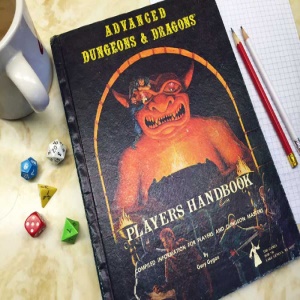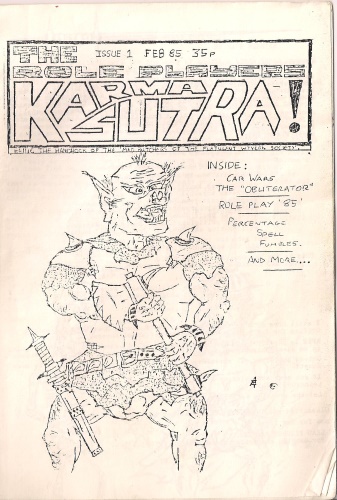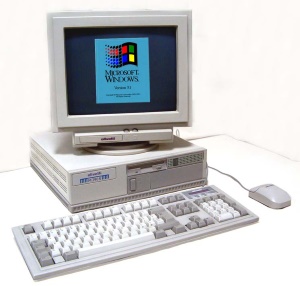
Put Your Phone Away and get on With the Game!
How technology has infiltrated tabletop games
When I started playing aD&D, we didn't have a computer. We had the one phone in the hall, and 4 channels on the TV. Pen and Paper gaming was exactly that. As technology progressed, we started to get access to computers that could print out character sheets, and even roll dice for us. We didn't use them.
Our bedrooms began to fill with rulebooks, scenarios, maps, character sheets and game-notes. Ring-binders, manilla folders and box-files overflowed from the shelves. And, of course, dice. As many as we could get our grubby mitts on. While playing, the tables were covered with the same. NPC names were jotted down, potions crossed out as used, and graph paper filled with gridded maps covered with impenetrable notes. HP tracks were written, rubbed out and written again until the paper wore through. Dice were liberally scattered amongst the papers until the end, when they were jealously herded back to their containers.
Things carried on like this for several years.
 The first drafts of TechNo Prisoners (known as S.M.F back then) were typed up on the school's BBC Micros, unlike my brother's fanzine, RPKS, which had been painstakingly typed up on Mum's old typewriter, and then literally cut-and-pasted into shape. The idea that mistakes could be instantly corrected, articles edited, and then printed out, seemed like the sort of technology we only saw on Star Trek!
The first drafts of TechNo Prisoners (known as S.M.F back then) were typed up on the school's BBC Micros, unlike my brother's fanzine, RPKS, which had been painstakingly typed up on Mum's old typewriter, and then literally cut-and-pasted into shape. The idea that mistakes could be instantly corrected, articles edited, and then printed out, seemed like the sort of technology we only saw on Star Trek!
Blank character sheets were customised, home-brew scenarios were typed up, with maps lovingly designed on primitive art programmes. But paper still ruled supreme. All of these creations were printed out, photocopied, scrawled upon, and hole-punched for filing. The computer was merely a way of producing more paper, faster! We filled notebooks with ideas, with characters, with maps, and the best made it to the folder ready for taking to computer room.
Even at university, where computers were common-place (and many gamers were on some computer-related course), pen and paper was the order of the day. Large shoulder-bags or rucksacks were packed with rulebooks and folders, and hauled to the designated gaming area each week, character sheets rewritten between sessions, and notes often lost in transit.
New concepts had begun to take shape: computerised 'role-playing' games were transforming from Rogue/nethack and Colossal Cave Adventure in to Ultima, Wizardy, and eventually Dungeon Master! Email was beginning to become accessible to more than just the computer department's favoured minions. Home computers were becoming less rare, although still a notable feature.
But still our table-top games hadn't really changed. Dice clattered across the landscape of rulebooks, character sheets, pens and pencils. Folders full of notes were packed in and out of bags each week. Some people were storing their characters digitally, printing out the latest version before each game, and updating after each session.
Enter The Internet!
 As more and more people signed up for internet access at home, more and more information became available (I haven't got exact numbers, but I suspect that in the early days, role-players were an over-represented demographic in both content-creators and consumers). Web pages sprung up like mushrooms, BBS/forums blossomed, and emails flickered back and forth. Hitherto unknown games were suddenly played across the world, new ideas were shared at the speed of light, and anyone with two fingers and a modem could publish their creations! Fanzines were replaced by their virtual cousins (as S.M.F. re-branded itself as TNP, on the Tripod platform!), and a new era of gaming was born. But what changes happened at the table? Not very much. New information appeared - downloaded scenarios, computer-generated NPCs, fancy artwork and maps. But it was all printed out, filed in a manilla folder, stuffed into a rucksack and hauled to the game. Some GMs experimented with keeping their info on a computer, and setting it up at the gaming table, but CRT monitors took up too much room, and could not easily be swung round to show the players a handout, and then back to hide the GMs notes. Trailing cables were also problematic.
As more and more people signed up for internet access at home, more and more information became available (I haven't got exact numbers, but I suspect that in the early days, role-players were an over-represented demographic in both content-creators and consumers). Web pages sprung up like mushrooms, BBS/forums blossomed, and emails flickered back and forth. Hitherto unknown games were suddenly played across the world, new ideas were shared at the speed of light, and anyone with two fingers and a modem could publish their creations! Fanzines were replaced by their virtual cousins (as S.M.F. re-branded itself as TNP, on the Tripod platform!), and a new era of gaming was born. But what changes happened at the table? Not very much. New information appeared - downloaded scenarios, computer-generated NPCs, fancy artwork and maps. But it was all printed out, filed in a manilla folder, stuffed into a rucksack and hauled to the game. Some GMs experimented with keeping their info on a computer, and setting it up at the gaming table, but CRT monitors took up too much room, and could not easily be swung round to show the players a handout, and then back to hide the GMs notes. Trailing cables were also problematic.
The only inroads computers seemed to be making at the table was people playing on their Nintendo Gameboy instead of concentrating on the games!
Although portable computers had been available since 1974, the prohibitive cost, and underwhelming power of them had kept them out of the hands of most people. It was not until 2000, with the release of the IBM thinkpad I series, that the general public started to regard laptops more with interest than suspicion. With CD/DVD capabilities, and built-in wifi (to go with the increasing amount of wifi routers in peoples homes), it was now practical to bring a computer to a sword-fight! Before long, it was no longer a rare sight to see a gamer pull not an array of tomes and files from his bag, but an electronic device. Initially, internet access was limited, and the devices would be pre-loaded from a connected machine at home. But as 3G telephony, home wireless routers, and wifi hotspots all grew, internet access became almost ubiquitous. Most gaming groups could now boast of at least one member who regularly brought their laptop. GMs were keeping campaign material in digital notepads, with colourful maps and high quality NPC portraits. Handouts were no longer printed out onto tea-soaked 'parchment' as screens could display them equally well.
Alongside this progress, although lagging behind, was the mobile phone. It may surprise younger readers to learn that iPhones have only been around for 9 years, and Android phones only 8. 2010 saw the smart-phone revolution. People had been growing used to mobile phones, playing Snake on their Nokia or sending business messages on their Blackberry, but suddenly an internet-connected 3"-5" touch-screen device, with downloadable Apps, a camera and internal storage was affordable and convenient.
It was not long before Tablet PCs, the larger cousin of smart phones, hit the gaming tables, and RPG companies (albeit with some notable exceptions) were soon rushing to catch up with the pirates to release digital copies of their games.
Our current Exalted game is not quite fully digital, but well on the way. We have no physical copy of the rule book, only the .pdf file held on a local server. Our character sheets are posted on a public forum so we can access them anywhere, along with session reports, discussions, house-rules, and stats of important Artefacts, and NPC lists. Some of us still keep a paper character sheet for scrawling on during the game, and update the forum later. Most of us have a phone, tablet or laptop that we constantly reference, although we still roll physical dice. We also keep a wiki containing details about the setting, places we have been, people we have met and other relevant information, along side write-ups of our gaming sessions.
The next stage is 'remote gaming'. I have friends who have played using Skype, replacing their seat at the table with a computer screen, but a more specialised platform would be roll20 and its ilk. Incorporating video chat, maps (with movable tokens), dice rollers and file storage for handouts, portraits, or just about anything, it aims to replicate the tabletop experience. One major, if overlooked, advantage is that platers can 'whisper' to each other while the GM is busy with other players, without disturbing the game.
And already we are seeing the next generation of technology. Ranging from the Oculus Rift to Google Cardboard, augmented reality is moving forwards. Only this week, Pokemon Go was released, bringing a new form of gaming to us.
Where this will leave table-top pen-and-paper gaming is yet to be seen, but I suspect that we will still be sat around arguing over exact rules interpretations, and who’s turn it is to order the snacks for some time to come.